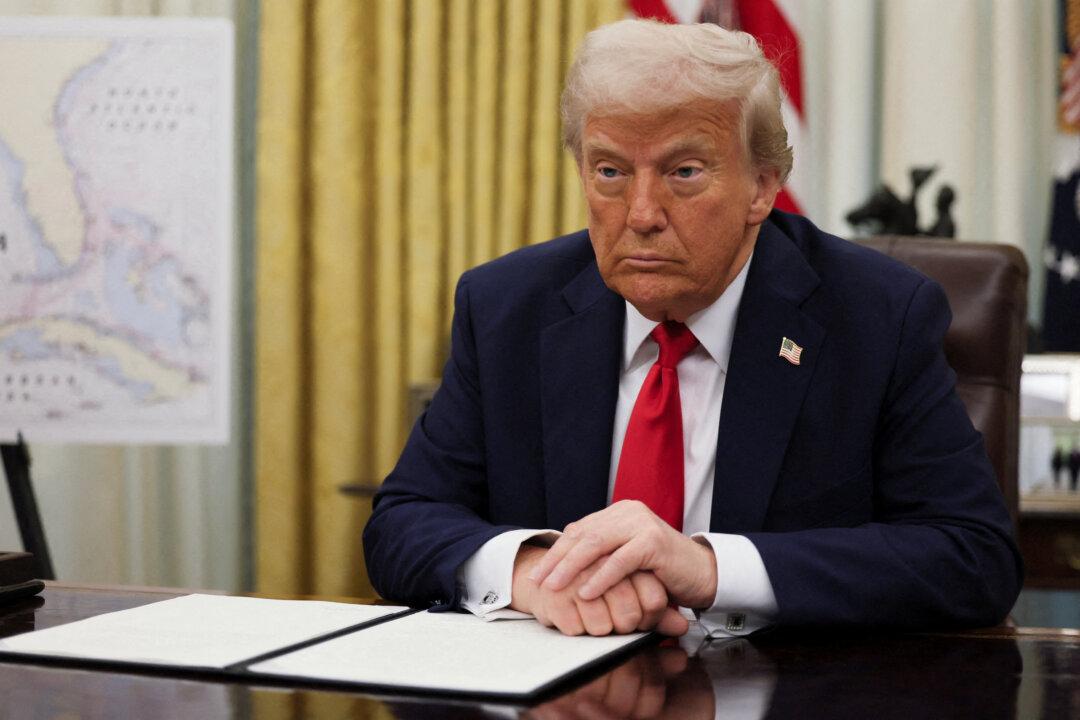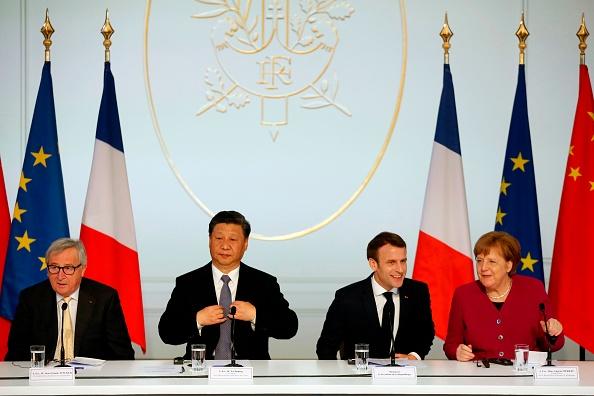The new Asia-Pacific economic pact cannot help China recover from its export market loss with the United States and growing international isolation. In Chinese leader Xi Jinping’s own words, “The wind is strong, and the tides are high.”
What RCEP Means for China
The RCEP negotiations began in 2012, and ASEAN countries have been pushing it hard. But top Chinese leaders were not really that keen on it. However, since the beginning of this year, the Chinese Communist Party (CCP) has suddenly found itself under international isolation. Party leader Xi Jinping finally acquiesced to signing the RCEP agreement and vigorously propagated it, mainly hoping to maintain a certain degree of relations with neighboring countries, even though the actual economic and trade effects may be very limited.But RCEP cannot resolve the trade disputes between China and the other countries. The CCP is actively provoking a trade dispute with Australia, and under the free trade agreement, it may also initiate disputes with Japan and other countries.
The political situation in the South China Sea and East China Sea is tense. The signing of the RCEP may be a temporary respite for the CCP’s senior leaders, but it cannot actually solve the regime’s problems at home and abroad.
Individual Free Trade Agreements
In November 2002, the ACFTA Agreement (Agreement on Comprehensive Economic Cooperation) between ASEAN and China was signed. In the past 18 years, countries involved have been reducing mutual tariffs in stages. According to the CCP’s official statement on Jan. 1, 2010, China’s average tariff applicable to ASEAN dropped to 0.1 percent from 9.8 percent.In 2019, China’s trade volume with ASEAN had climbed by 14 percent to 4.43 trillion yuan, according to a Chinese media report. While the EU remained China’s single largest trading partner with 4.86 trillion yuan in bilateral trade and an eight percent year-on-year growth rate, the United States was relegated to the third place on the list of China’s top trading partners, with bilateral trade contracting more than 10 percent to around 3.73 trillion yuan, the report said.
Low tariffs between China and ASEAN have already been implemented, and the trade volume has been comparable to that of the European and American markets. Now that the RCEP is signed, it remains to be seen whether there is room for further growth in trade.

New Zealand and Australia
In November 2004, New Zealand and China launched free trade agreement negotiations. The negotiations to upgrade the trade agreement concluded in 2019.South Korea
South Korea has also been eager to enter the Chinese market, and on June 1, 2015, the two countries signed a free trade agreement. But in 2017, the CCP launched an anti-Korea campaign to keep mainland Chinese from traveling to South Korea, and South Korean companies were blocked in the Chinese market. Later, South Korea’s Samsung mobile phones were blocked in the Chinese market. After its technology had basically been stolen, Samsung dejectedly withdrew from China.Japan
With Japan joining the RCEP, however, it is like a double-edged sword against the CCP. Of the 15 countries that have signed RCEP, Japan is the only new member to join the pact. The CCP may have expected Japan to be a new growth point for China exports, but that’s not the case.Chinese products, such as low-value clothing and daily necessities, might get access to the Japanese market like it does to the U.S. and European markets. However, China’s small- and medium-sized machinery and electronic products are of poor quality. They may make it into the U.S. and European markets, but it’s difficult for them to enter the Japanese market. Since Japan is already part of the WTO, Chinese products that can enter the Japanese market should have already done so. Therefore, further tariff reductions may have a limited effect on market expansion in Japan.
In turn, Japanese firms have long hoped to enter the Chinese market, and China’s high tariffs have indeed been an obstacle. In the past few decades, when Chinese people went to Japan, they always brought back certain high-quality Japanese products at a much lower cost than what they sold for in mainland China. With reduced tariffs and high-quality Japanese products sold at lower prices, the Chinese consumers would welcome them. But is the CCP willing to accept that? Probably not.
The CCP may not implement tariff concessions under various excuses, nor set up layers of non-tariff barriers to prevent Japanese products from entering China. Trade disputes between China and Japan are foreseeable. Deteriorating Sino-Japanese relations will not only be difficult to ease but may even worsen.

Intellectual Property Theft
The CCP, of course, has its eyes on Japanese intellectual property in order to make up for the difficulties caused by the U.S. technology blockade. But Japan is also clearing out spies among Chinese students in Japan, and Japanese companies are leaving China on a large scale. So, the chance for the CCP to steal Japanese technology is also decreasing. But regardless, stealing and copying Japanese technology is surely on the CCP’s agenda, and Sino-Japanese disputes over intellectual property can be anticipated.RCEP is described as a “comprehensive partnership,” but it doesn’t actually entail strict intellectual property protection. According to the Electronic Frontier Foundation, it “contained quite simply the worst provisions on copyright that we had ever seen in a trade agreement.”
Foreign Exchange
Another point is that RCEP cannot bring the foreign exchange that China needs. As much as the CCP praised RCEP, the actual economic and trade benefit for China is small. The number of exports resulting from RCEP won’t compensate for the sharp decline in the U.S.-China trade. The U.S. dollar that the CCP urgently needs is already stretched thin.Following the moves by Germany and France, the Netherlands also just announced its policy in the Indo-Pacific region. Like the U.S.-China trade negotiations, the EU-China trade negotiations have difficulties making a breakthrough. In 2019, the EU’s trade deficit with China had grown to $220 billion. An EU-China trade dispute can be anticipated as a result of China’s declining economy and the demands for an international investigation into the origin of the coronavirus outbreak.
At present, it has become a general trend for Western supply chains to leave China, and the 10 ASEAN countries are the beneficiaries of the migration. After these supply chains leave China, some basic raw materials and small parts may still be exported from China to ASEAN countries, but these cannot be exchanged for dollars or euros. The CCP may be able to obtain more Japanese yen and Korean won through substantial export subsidies, but that’s unlikely to compensate for the need of dollars.
The CCP may be able to expand the use of its yuan in ASEAN, but it’s unable to obtain the much-needed U.S. dollar and euro foreign exchange, which is also one of the key reasons for China’s forced internal circulation policy.
In order to earn a large amount of foreign exchange, the CCP has always pursued an unbalanced trade strategy: adopting import subsidy dumping, setting up tariffs and non-tariff barriers to prevent imports, and restricting foreign companies from operating independently to maximize a trade surplus and hold more foreign exchange. The CCP has never been willing to truly engage in free trade, nor will it abide by any free trade agreement.
CCP Is Anxious
The approval and gradual implementation of RCEP in various countries will take another two years. Meanwhile, the CCP may hope to temporarily resolve the tension with ASEAN in the South China Sea. At the very least, they want to make sure that ASEAN countries don’t get too close to the United States, and the CCP won’t fall into complete isolation among neighboring countries.On Nov. 17, Xi Jinping participated in a video conference with Russia, India, Brazil, and South Africa in the BRICS summit. In the address, Xi said, “All of us are indeed passengers in the same boat. ... The wind is strong, and the tides are high.” It clearly indicates the communist regime’s anxiety of facing international isolation and their urgency of arbitrarily drawing in and forming an alliance.
“Internal circulation,” though not a way out of China’s economic woes, may be the only path left.
On Nov. 16, Li Keqiang once again hosted a symposium for economists and entrepreneurs. The frequent economic symposiums suggest that the CCP is incapable of turning the economy around.
At the symposium, Li exposed the true picture: “The difficulties of this year’s economic development are special. … The current domestic and international situation is still complex and severe. We must not only strengthen our confidence, but also be fully prepared to deal with difficulties and challenges … [and] promote economic recovery to a reasonable range.”
Li also urged “relevant departments to follow up on the implementation of the RCEP agreement.” But if the CCP really implements zero tariffs in accordance with the RCEP, it will lose part of its fiscal revenue. The CCP will indeed need to “live on a tight budget.”





